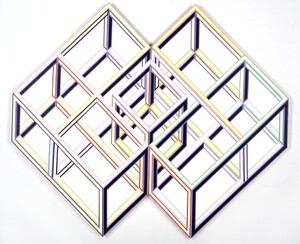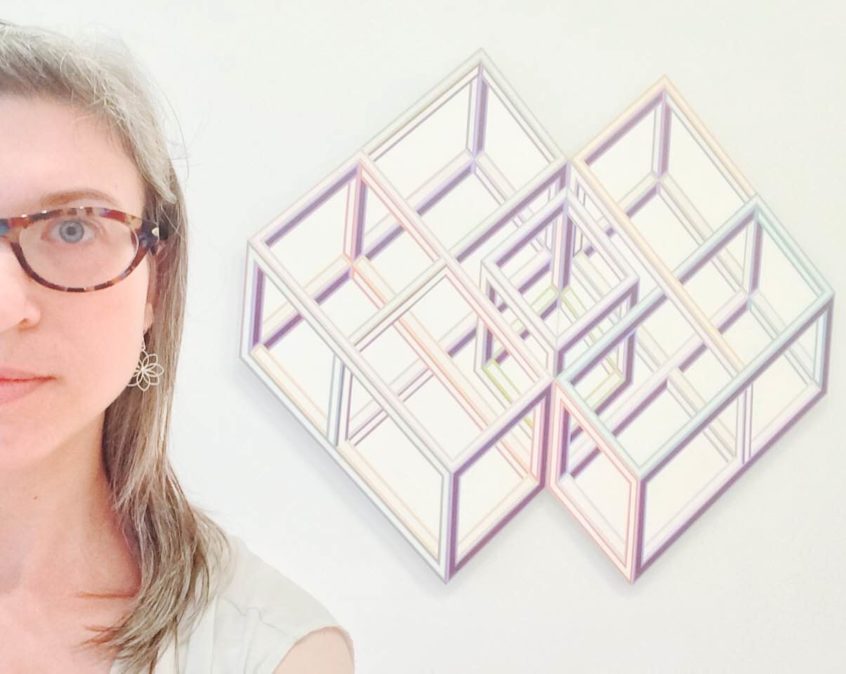
Alvin Loving, Rational Irrationalism, 1969. The Whitney Museum, NYC.
http://collection.whitney.org/object/2284
I am particularly drawn to artwork that is inspired by elements of mathematics, such as geometric forms and visual representations of topologies or concepts of infinity. Some well-known examples are M.C. Escher’s tessellations and Möbius strips, Salvador Dalí’s hypercube in his Crucifixion, and the golden ratio in Leonardo da Vinci’s Vitruvian Man. Art like this appears to reveal the hidden beauty of the order and symmetry that can be found all around us. And it makes sense that artists would find a muse in mathematics– mathematicians often share the sentiment that beauty is a guidepost in their work. Perhaps Bertrand Russell’s words best encapsulate this idea: “Mathematics, rightly viewed, possesses not only truth, but supreme beauty– a beauty cold and austere, like that of sculpture,…yet sublimely pure, and capable of a stern perfection such as only the greatest art can show.” Just like a work of art, the mathematician views an elegant equation and looks on beauty bare.

